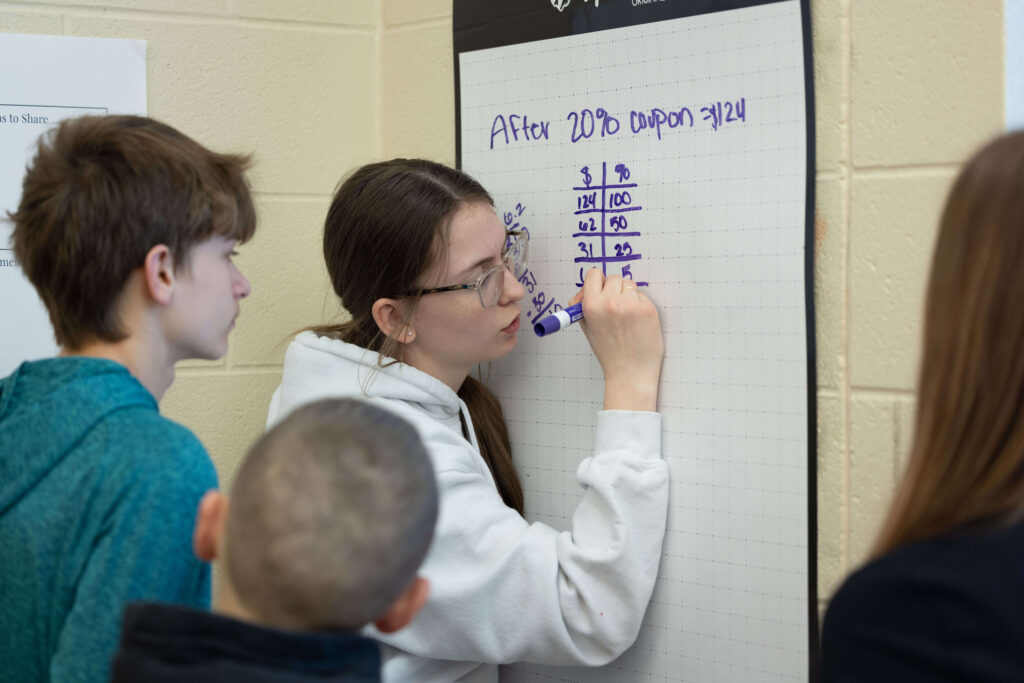
Here is a question to ask yourself right now: “What is an asset that each of my students possesses?” If you can easily answer this for each student you teach, refine the question to, “What is a mathematical problem-solving asset that each student possesses?” If you struggle to answer these questions, it is time to get to work building relationships with your students.
In our roles as coaches, too often we hear teachers blaming students.
- “They don’t understand this because they don’t do their homework.”
- “They can’t understand this lesson because they are at a 3rd grade reading level.”
- “They didn’t retain anything from last year.”
- “I need to cut this out of the lesson because half of the students in this class have an IEP.”
Worse yet, although it may seem like a teacher is being discreet when they make these types of statements, eventually someone overhears them, leaving a student with the knowledge that their teacher doesn’t believe they are capable of learning. What seemed like a comment that might justify the teacher’s practice turns into a barrier to building a relationship with a student. Maya Angelou has a famous quote that is relevant here: “I’ve learned that people will forget what you said, people will forget what you did, but people will never forget how you made them feel.”
What if we shifted the narrative from blaming students to one of collective responsibility and support? It is crucial for us to recognize that all students come with unique backgrounds, identities, and strengths to contribute to the classroom. Focusing on students’ deficits can be counterproductive by inadvertently sending a message to students that their efforts are not enough and that they do not belong. By assuming responsibility, teachers not only improve academic outcomes but also contribute to the well-being and confidence of their students. In the words of Ken Williams, the author of Ruthless Equity, “It’s not about blame shifting, it’s about owning it.”
Consider all the reasons students might be behind.
- Long term sub the year before?
- Pandemic?
- Chronic illness with the student or family member?
- Being a member of a traveling sports team?
- Relocation?
- New teacher mid-year?
- Unstable home life?
- Large, loving, and boisterous family?
The list of possible reasons could go on and on. We can spend our time and energy thinking about what damaged our students’ mathematical abilities, but what is more important is to ask, “What can we do to mitigate any negative effects these events might have on students’ mathematical identities?”
Identify Assets that Describe How Students Learn
Articulating the assets of students is challenging. It is more valuable to all stakeholders when teachers describe these assets in terms of how students learn rather than in terms of what discrete concepts students are proficient with.
For example, when describing discrete concepts, you might say that a student is good at factoring, but that is only relevant if the students are working on problems that require factoring. Or you could say that a student is supportive of their teammates, which is relevant most days in the classroom. You could say a student is able to identify quantities in practical situations using diagrams, two-way tables, graphs, flowcharts, or formulas.
However, researchers have established other ways to describe student assets. One way is to use the Standards for Mathematical Practice (SMPs), as seen in the left-hand column of the table. These are relatively well-known, originating from the Common Core State Standards. While they are a great starting place, it is important to note that these were designed to “describe varieties of expertise that mathematics educators at all levels should seek to develop in their students” (italics added for emphasis). These SMPs may be great at describing students’ mathematical abilities, but they seem to fall short of being able to describe the student as a whole.
This is where the Collaborative for Academic, Social, and Emotional Learning (CASEL) Framework could come into play. This framework, as shown in the right-hand column of the table, was designed with the idea that we are all part of a broader system that shapes not only learning but student development and experiences as well. Rather than just focusing on mathematical competencies, the CASEL Framework was designed to “foster knowledge, skills, and attitudes” and “establish equitable learning environments.”
| Standards for Mathematical Practice | CASEL Social Emotional Competencies |
|---|---|
| Make Sense of Problems Persevere Reason Abstractly Reason Quantitatively Construct Viable Arguments Critique the Reasoning of Others Model with Mathematics Use Tools Appropriately Attend to Precision Look for Structures Use Structures Look for Patterns Use Patterns |
Self-Awareness Self-Regulation Social Awareness Positive Communication Determination Responsible Decision Making Autonomy Social Responsibility Resilience |
Now think of a student in your classroom.
- Do any of the words in the table describe assets that the student possesses?
- Can you support that student in their study team by leveraging this language?
- When you discuss how the student is doing with their guardian, could these words help you describe how that student operates in your classroom?
Thinking about student assets using these terms can support teachers in developing and cultivating those assets not just in a single student, or in a single classroom, but in the entire culture of learning mathematics at your site. Your teaching team can step away from the blame game and take action on these practices and competencies. By reversing the narrative and discussing student assets, you might impact your students’ perceptions of teaching and learning mathematics. Teachers who embrace vulnerability might even think about which of the assets on this list they possess and how they were able to develop those assets.